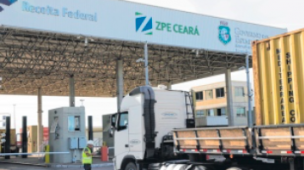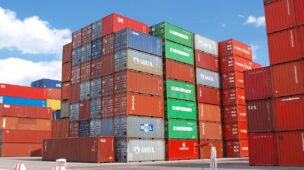Tempo de leitura: 2 minutos
Foreign-trade zones (FTZs or zones) provide tariff savings and other benefits to companies that engage in import and export operations in the United States. These benefits were provided by Congress beginning in 1934 to encourage U.S. economic activity in manufacturing and distribution, and employment that might otherwise be performed abroad. Economic analysis of the effects of FTZs is limited, particularly the impact of FTZs on economic activity and jobs in localities with operational zones. To remedy this deficiency, the National Association of Foreign Trade Zones commissioned this study to inform policymakers and the public, and to provide an analytic tool for economic development institutions.
This study measures, both quantitatively and qualitatively, the economic effects of FTZs on the communities in which the zones operate, which we refer to as Zone Economic Communities (ZECs). We examine the economic impacts of FTZs on ZECs using an econometric approach that enables us to attribute changes in community employment, wages, and value added1 to the operation of a zone. Specifically, we examine the changes in these three economic measures in each of 251 ZECs compared to an otherwise similar economic community in the same region that did not have an FTZ. We supplement the econometric analysis by profiling a variety of firms that use FTZs and describe the specific ways in which the program’s benefits have affected company and community employment and other economic activity, including, the efficient allocation of company resources, domestic production, and exports.
The study makes the following findings supported by the data collected for 251 ZECs:
- Employment, wages, and value added exhibit an increase in the broader zone community following the establishment of an FTZ. Those gains are the greatest in the early years for employment and wages, and throughout the period for value added. This increased economic activity is also visible in advance of the formation of the FTZ.
- The establishment of an FTZ causes a positive increase in employment growth in the surrounding ZEC (up 0.2 percentage points), wage growth (up 0.4 percentage points), and value added growth (up 0.3 percentage points) in the ZEC, typically eight years and later, after establishment of the FTZ. The impacts begin sooner, in years six and later, for wages and value added in small- and medium sized ZECs.
- Company access to FTZ benefits has substantial ripple effects through the company’s supply chain, much of which is typically located nearby (BMW Manufacturing in South Carolina, ExxonMobil Corporation in Louisiana, Yamaha Motor Manufacturing Corporation in Georgia, are important examples of this effect). FTZ benefits ensure that direct and indirect jobs remain in the United States (e.g., Helly Hansen) despite considerable economic pressures to relocate operations to countries outside the United States. FTZ benefits support high- value U.S. R&D (e.g., Lam Research Corporation). FTZ benefits have brought production jobs back to the United States (e.g., Prodeco Technologies, and Piramal Critical Care). FTZ savings have enabled companies to direct company resources to their most efficient uses, such as worker training (e.g., UniCarriers Americas).






Os comentários foram encerrados, mas trackbacks e pingbacks estão abertos.